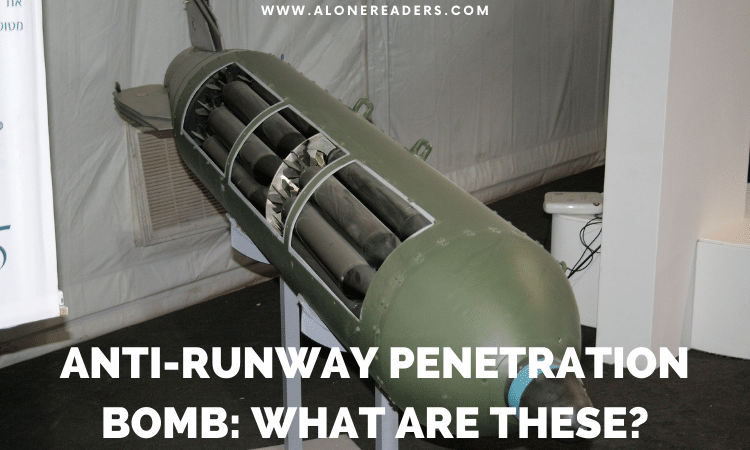
Anti-runway penetration bombs are explosive weapons that use bombs or bomblets to destroy or otherwise impair runways so that aircraft cannot use them.
Israel's deployment of specialised cratering anti-runway weaponry during the 1967 Six-Day War was possibly the most strategically significant, well-known, and first instance of such use in a war. In a preemptive strike on the first morning of the conflict, the whole, much smaller Israeli Air Force was committed to the strike, which led to the dibber bombs playing a significant role in the nearly full destruction of the massive Egyptian Air Force, largely on the ground. The unexpected defeat of the Egyptian air force and the ensuing Israeli air superiority were major factors in the victory of the war on all fronts. An Israeli-French anti-runway weapon prototype was called the IMI "Runway Piercing Bomb." In order to penetrate the runway surface and explode, it used rocket braking over the target and a second rocket burst.
The Matra Durandal, a single 450 lb bomb with parachute brakes, a rocket booster, and two warheads, is one system that has been in existence since 1977 and deviates from the French/Israeli runway piercing bomb design employed in 1967. It is dropped from a low-flying aircraft, parachute-braked, and when the angle is right, it fires a rocket to hit the runway. It employs a massive explosive charge to first make a crater, and then a smaller explosive charge that has made it within the hole is used to move nearby concrete slabs. Once displaced, the slabs are far more difficult to handle than a little hole that can be filled with asphalt. The Durandal has received a lot of exports. In the early days of the Gulf War in 1991, the United States Air Force attacked Iraqi airfields with the Durandal, delivered by General Dynamics F-111 Aardvarks.
A dispenser and submunitions system called the JP233 was another that has since been taken out of service. In order to destroy the target runway and obstruct repair operations, an aircraft would fly over it and drop a mix of penetrating and anti-personnel submunitions. The possibility that the anti-personnel mines have time-delay fuses means that runway maintenance workers run the risk of being killed or seriously hurt. The JP233 was deactivated when the UK ratified an international agreement against cluster mines.